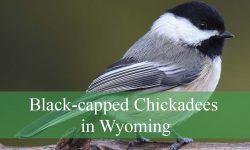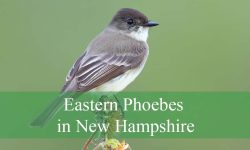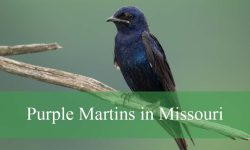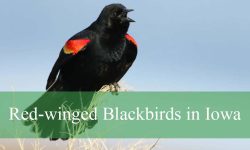Vultures in Texas are a common and important part of the natural landscape. These large, scavenging birds are often seen gliding effortlessly across the sky or gathered near roadkill and open fields. Known for their keen senses and crucial ecological role, vultures help clean the environment by consuming dead animals that could otherwise spread disease.
There are three main types of vultures in Texas, each with distinct physical traits, behaviors, and habitat preferences. The Turkey Vulture and Black Vulture are widely distributed throughout the state, while the California Condor is extremely rare and only occasionally observed. Identifying these birds involves looking at features like head color, flight patterns, and wing markings.
Vultures can be found across Texas in a variety of environments, from arid deserts and coastal plains to farmland and forest edges. They adapt well to both natural and human-altered landscapes. This guide will help you learn how to identify the three types of vultures in Texas, complete with pictures, key characteristics, and fascinating facts about each species.
Different Types of Vultures Found in Texas
Turkey Vulture (Cathartes aura)
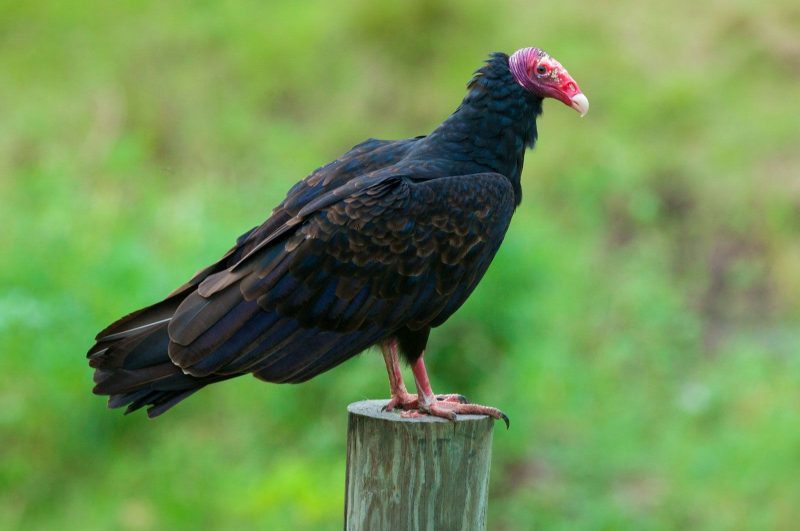
The Turkey Vulture is one of the most easily recognized scavenger birds in Texas, and also one of the most widespread. Adults are known for their bald, bright red heads, which contrast sharply with their dark brown to black feathers. Their wings are long and broad, and when soaring, they hold them in a distinctive shallow “V” formation. Juveniles have similar features but sport grayish-black heads instead of red. With a wingspan reaching up to six feet, these vultures often appear large and majestic when gliding silently across the sky.
This species relies heavily on its excellent sense of smell—unusual among birds—which enables it to detect the scent of decaying flesh from hundreds of feet in the air. Unlike other raptors, Turkey Vultures rarely vocalize and only produce low hissing or grunting sounds when threatened. They are non-confrontational and typically feed alone or in loose groups. When not foraging, they can be found roosting communally in large numbers on dead trees, cliffs, or even man-made structures.
In Texas, Turkey Vultures are a year-round resident and are seen across virtually all regions—from the deserts of West Texas to the humid forests of East Texas and the coastal plains along the Gulf. They prefer open areas like grasslands, pastures, highways, and farmlands where roadkill and natural carcasses are easier to locate. However, they are highly adaptable and can also be seen soaring above suburban neighborhoods or resting on cell towers.
These vultures are nature’s cleanup crew, feeding exclusively on carrion. They play a vital ecological role by removing dead animals that could otherwise spread disease. A fun fact about Turkey Vultures: they use a defense mechanism called urohidrosis, which involves defecating on their legs to cool themselves and reduce bacteria after standing in carcasses—a behavior unique to New World vultures.
Black Vulture (Coragyps atratus)
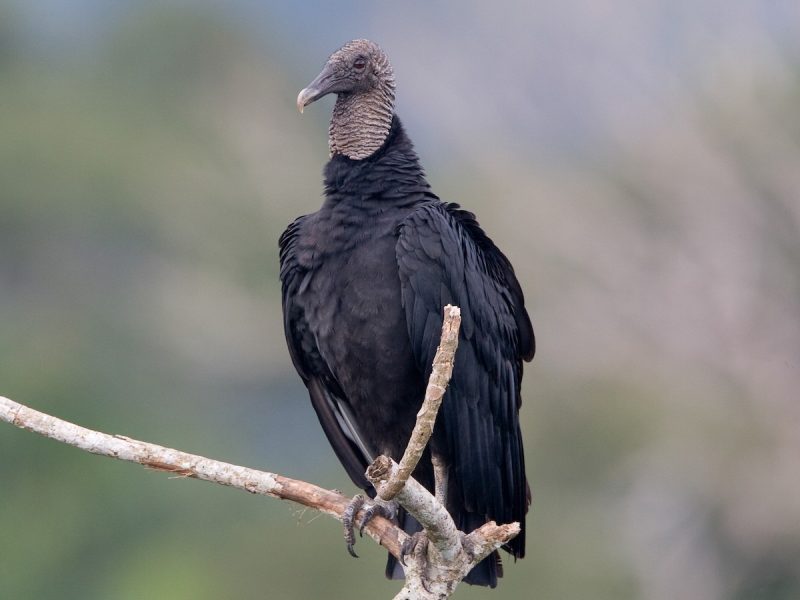
Black Vultures are another prominent scavenger species in Texas and are slightly smaller and stockier than their Turkey Vulture cousins. They have black feathers, a short tail, and a distinctively wrinkled, dark gray to black bald head. Their wings are shorter and more squared off, with noticeable silvery-white patches near the tips of the underside, which can be seen clearly in flight. They flap their wings more frequently and fly with a more direct, purposeful style compared to the graceful soaring of Turkey Vultures.
Unlike Turkey Vultures, Black Vultures lack a strong sense of smell. As a result, they often depend on other vultures to locate carrion and will follow them to food sources. Once there, they tend to be more assertive and will aggressively chase away weaker competitors. Black Vultures are also more social in behavior—roosting, traveling, and feeding in large, tight-knit groups that may include family members. Their group cohesion is particularly strong, with some individuals believed to mate for life.
They are common in eastern and southern Texas but can be found statewide, particularly in areas with a mix of open country and nearby woodlands. Black Vultures prefer to nest in well-hidden locations such as hollow logs, tree stumps, dense brush, or abandoned buildings. Unlike many birds, they do not build traditional nests; instead, they lay their eggs directly on the ground or bare surfaces in concealed areas.
The diet of Black Vultures consists primarily of carrion, but they are known to eat a broader range of food than Turkey Vultures. They sometimes scavenge food scraps from landfills, raid dumpsters, and even kill small or weakened animals, including livestock, which occasionally brings them into conflict with farmers. A fun fact about Black Vultures: they exhibit a behavior known as “sunning,” where they spread their wings wide open to absorb heat and help kill bacteria—often seen during the morning hours on rooftops, trees, or fence posts.
California Condor (Gymnogyps californianus)
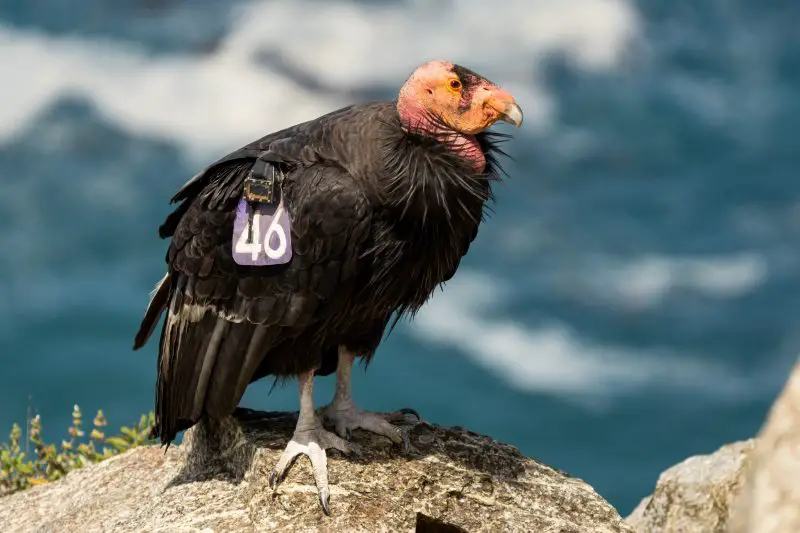
The California Condor is the largest flying land bird in North America and, although virtually extinct in the wild by the 1980s, it has since been the focus of major conservation and reintroduction programs. In historic times, this massive vulture once ranged into parts of Texas, but today it is only very rarely observed in the state. Occasionally, a vagrant individual from Arizona’s reintroduced population may cross into far western Texas, but such events are extraordinary and closely monitored by conservationists.
These condors have striking features: a black feathered body with stark white patches underneath their wings, a short tail, and a large, bald head that ranges from pink to orange in mature individuals. Juveniles appear darker overall. They boast an impressive wingspan of nearly 10 feet (around 3 meters), making them larger than either the Turkey or Black Vulture. In flight, they soar high with barely a wingbeat, using rising air thermals to cover great distances while searching for food.
While no longer a resident of Texas, California Condors have been successfully reintroduced into the Grand Canyon region of northern Arizona and southern Utah. The possibility of one straying into Texas is slim but not impossible. These birds require remote, mountainous terrain with cliffs or tall trees for roosting and nesting. Their nests are usually in caves or rock crevices, where they lay a single egg and rear one chick every two years.
California Condors feed exclusively on carrion, including large carcasses such as deer, cattle, and sheep. Unlike other vultures, they rely mostly on sight to locate food. A fascinating fact about this species is that it can live up to 60 years in the wild. Their critically endangered status and slow reproductive rate make every individual incredibly important to the survival of the species, and sightings outside their expected range—like in Texas—are considered major ornithological events.


